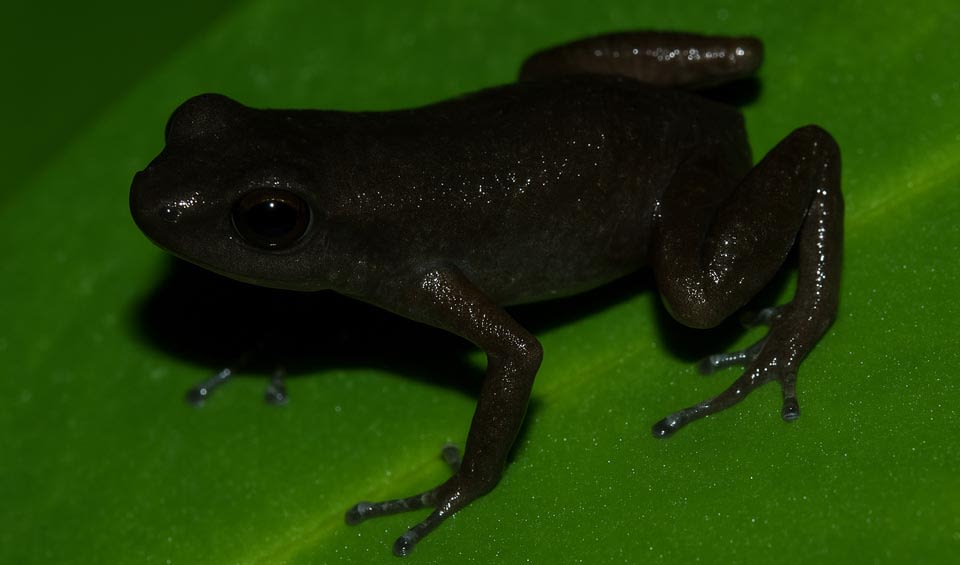Stands out as one of the most intriguing and malodorous amphibians on Earth. Endangered and facing a precarious future, this frog earns its name from its remarkable ability to release a vile-smelling skin secretion for defense purposes—a characteristic reminiscent of the notoriously intense anal emissions of skunks.
Living in warm and humid environments, which provide ideal breeding grounds for bacteria, the Venezuelan skunk frog has evolved to secrete chemicals called peptides all over its skin. While these peptides contribute to the frog’s foul odor, they are crucial in protecting the frog from deadly infections. Despite the repulsive scent, these peptides act as potent antimicrobial agents, helping to fend off harmful bacteria and pathogens.
The unique properties of the Venezuelan skunk frog’s skin secretions have attracted the attention of scientists, who are exploring their potential for developing powerful antibiotics. By studying the compounds present in the frog’s skin, researchers hope to unlock new strategies for combating antibiotic-resistant bacteria and advancing human health.
However, despite its potential contribution to medical science, the future of the Venezuelan skunk frog remains uncertain. Classified as “Critically endangered,” this species faces numerous threats to its survival, including habitat loss, pollution, and disease. Rapid deforestation and urbanization in its native habitat have significantly reduced the frog’s population and fragmented its remaining habitat, further jeopardizing its existence.
Distribution
 Venezuela
VenezuelaAnything we've missed?
Help us improve this page by suggesting edits. Glory never dies!
Suggest an editGet to know me
Terrestrial / Aquatic
Altricial / Precocial
Polygamous / Monogamous
Dimorphic (size) / Monomorphic
Active: Diurnal / Nocturnal
Social behavior: Solitary / Pack / Herd
Diet: Carnivore / Herbivore / Omnivore / Piscivorous / Insectivore
Migratory: Yes / No
Domesticated: Yes / No
Dangerous: Yes / No





